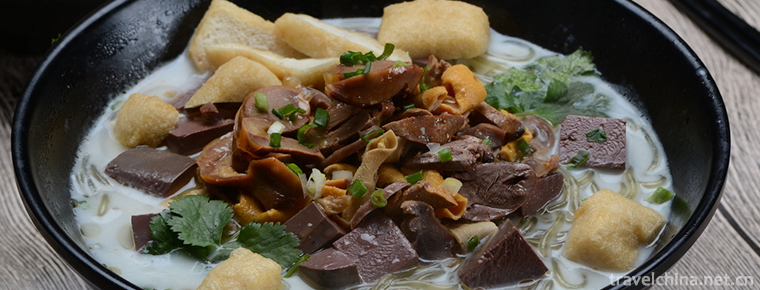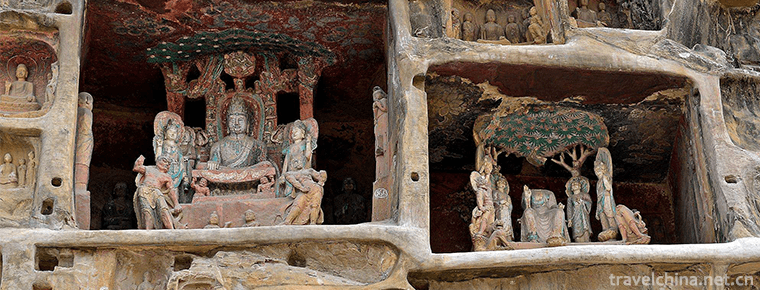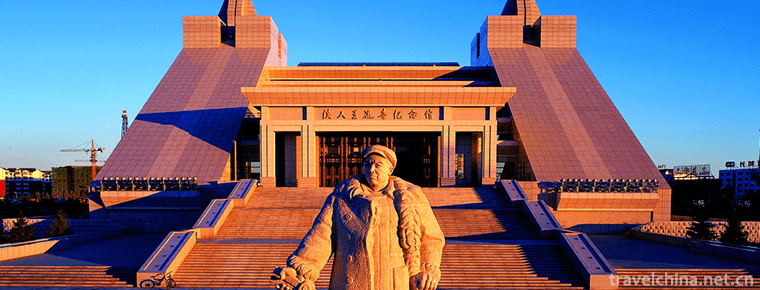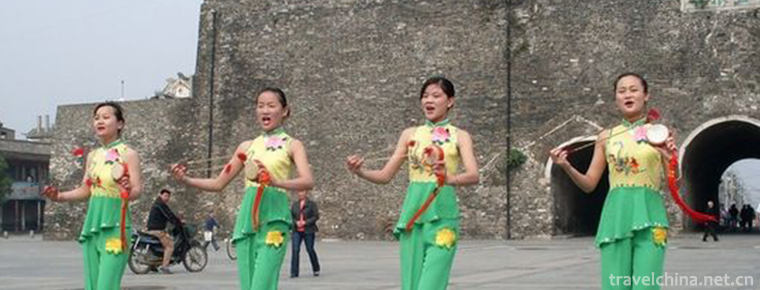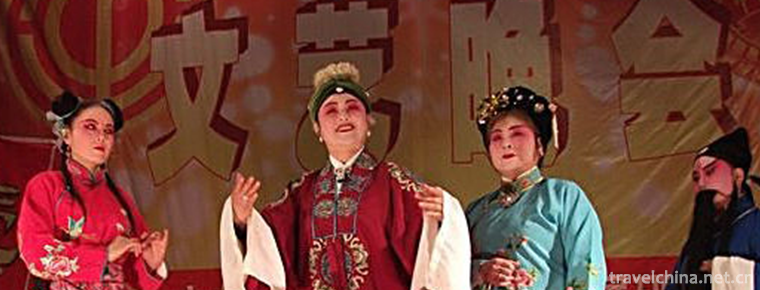Sebin Festival of Ewenki Nationality
Sebin Festival of Ewenki Nationality
"Serbin" is an Ewenki language, meaning "happy and peaceful". Sebin Festival is a traditional festival of the Ewenki people. On Sebin Festival, Ewenki hunters gather together. Celebrations will be held. All tribes, men, women, old and young, will be attended by Song, presided over by tribal chiefs. Simple hunters lit bonfires, sang and danced around them, offered sacrifices to the God Bayiannai, and held grand banquets. After the banquet, the hunters continued to dance until dawn the next day.
On May 23, 2011, the "Ewenki Sebin Festival" declared by Nehe City, Heilongjiang Province, was listed in the third batch of national intangible cultural heritage list with the approval of the State Council.
historical origin
Ewenki is one of the less populous ethnic groups in China. They live in the junction of Great Hinggan Mountains and Hulunbeir Grassland. They have their own language and no written language. Sebin Festival is an Ewenki language, meaning "happy and peaceful". It is reported that the current traditional Sebin Festival folk activities include worship of mountain gods, ethnic singing and dancing performances, traditional competitions, games, picnic wine banquets, bonfire parties, etc. Its customs are primitive and primitive, unique.
According to historical records, the ancestors of the Ewenki people, who lived by hunting, celebrated three days by singing and dancing every time they hunted such beasts as bears, which was the rudiment of the original Sabine Festival. But bears are not easy to catch, so the early Sebine Festival did not have a fixed time, and the content was relatively single because of the "bear sacrifice". Later, owing to the sharp decrease in the number of bears, the Ewenks began to hunt minks, deer and other animals. The Sebin Festival also gradually transited from bear sacrifice to mountain god sacrifice. Sabine Festival's sacrifices and carnivals are also constantly enriched, gradually increasing such content as imitating animal and bird singing and dancing performances, hunting, gathering and production of labor competitive games, as well as Bonfire Dance derived from heating carnival. With the development of the times, the religious color of today's Sebin Festival is gradually fading away, and gradually evolved into the annual grand carnival of the tribe.
Festival activities
Sebin Festival begins with sacrifice. Sacrifices are usually presided over by family, tribal leaders or tribal shamans, offering deer, cattle, sheep, horse milk and other sacrifices in front of mountain god tablets or Obo, in order to pray for good weather, prosperity of human beings and animals, and peace in all seasons. Following the sacrificial ceremony, songs and dances reflecting the Ewenki ethnic style and features and competitive activities have been launched one after another. During this period, a series of traditional performances, such as Luzhijile, Zandale and horse racing, archery, wrestling, were staged one by one. It was not until the beginning of the "picnic" that the traditional dance ended. On the "picnic of customs", the younger generation presents mare's milk to the elders, while the elder distributes auspicious gifts to the children. The picnic wine banquet will continue until the bonfire party, which is the last part of Sebin Festival and the climax of the festival. Men, women and children in the family or tribe are enjoying themselves by drinking, dancing around the campfire (also known as circle dance) and carnivalizing until dawn the next day.
Inheritance value
Ewenki is an ancient nation. They are Ewenki hunters living in big forests. Ewenki Autonomous Banner is located in the junction of Great Hinggan Mountains and Hulunbeir Grassland. Historically, Ewenki people who live in forests and hunt for a living have extremely harsh living conditions, but life can not always be in sorrow and pain. Therefore, they strive to create a happy, peaceful and happy living environment. They encourage each other in the national assembly, and they surround them. The bonfire sang and danced, and there was a carnival like Sebin's Day. In ancient times, Ewenki hunters gathered to celebrate the Sebin Festival. All the tribes, men, women, old and young, attended and were presided over by tribal chiefs. Simple hunters lit bonfires, sang and danced around them, offered sacrifices to the God Bayiannai, and held grand banquets. After the banquet, the hunters continued to dance until dawn the next day.
In the sixteenth century, "Shamanism" emerged among the Ewenki people, believing that "Shaman" was a "god" who could expel the evil ghosts of patients. Shamanism has spread to every clan, each clan has its own "Shaman". Since then, the Ewenki people began to believe in Shamanism, and the "Sebin Festival" characterized by totem has been lost for a time. However, since 1994, some folk festivals have been restored in the Ewenki Autonomous Banner of Inner Mongolia Autonomous Region. Sebin Festival is held on June 18 every year. Rainbow song is a Festival song of Ewenki Sebin Festival.
Inheritance and protection
In the 16th century, "Shamanism" emerged among the Ewenki people, believing that "Shaman" was a "god" who could expel the evil ghosts of patients. Shamanism has spread to all "Uriliang" (clan), each clan has its own "Shaman". Since then, the Ewenki people began to believe in Shamanism, and the "Sebin Festival" characterized by totem disappeared.
After the founding of the People's Republic of China, the people's government of Inner Mongolia Autonomous Region approved the restoration of the Ewenki ethnic name on March 5, 1958, abolished the nicknames "Solon", "Tungus", "Yakut" and so on, and the Ewenki ethnic group realized the unification of the ethnic name. The Ewenki Autonomous Banner was established on August 1, 1958 with the approval of the State Council. At the same time, the Ewenki people scattered in other places have established nine ethnic townships. In December 1984, the Ewenki Research Society of Inner Mongolia Autonomous Region was established. According to the requirements and wishes of the Ewenki people, the Ewenki Research Society of the Autonomous Region has consulted extensively on the name and time of Ewenki festivals, and the Ewenki Research Society of Heilongjiang Province has also participated in the discussion. At the third member congress of the Ewenki Research Association in the autonomous region, the name of "Sebin" was unanimously adopted as the Ewenki festival, and the festival time was set at June 18 each year. The Rainbow Song was tentatively designated as the Ewenki Festival song. The banner, the cadres and the masses of Ewenki nationality townships (Sumu, Ethnic Village and Gacha) were called upon to carry out festival activities at that time.

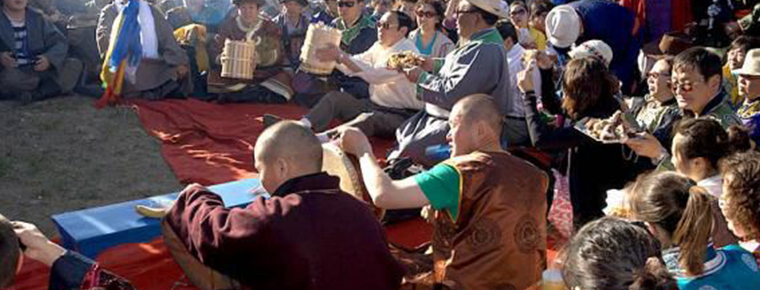
-
Duck blood soup with vermicelli
Duck blood vermicelli soup is a famous specialty in Nanjing, belonging to Jinling food....
Views: 218 Time 2018-10-26 -
Xiangsha Bay Scenic Spot in Dalat Banner Ordos
Xiangsha Bay was opened as a tourist attraction in January 1984, listed as a national line scenic spot by the National Tourism Administration in 1991.
Views: 240 Time 2018-11-29 -
Taimu Mountains
Taimu Mountain is located in the northeast of Fujian Province. It is 45 kilometers south of Fuding City from the urban area..
Views: 191 Time 2018-12-08 -
Qianfoya Scenic Spot
Guangyuan Qianfoya is the largest grotto group in Sichuan Province. The statues of cliffs began in the Northern Wei Dynasty. After nearly 1500 years, the cliffs, which are 45 meters high and 200 meter.
Views: 112 Time 2018-12-26 -
Iron Man Wang Jinxi Memorial
The Iron Man Wang Jinxi Memorial Hall was built in 1971 to commemorate the pioneer fighter of the Chinese working class, the Iron Man Wang Jinxi. The Ironman Memorial Hall.
Views: 184 Time 2019-02-22 -
Fengyang folk songs
Fengyang folk song is a traditional folk song in Anhui Province. Fengyang folk song in Fengyang flower drum is one of the important components of Fengyang folk song.
Views: 206 Time 2019-04-29 -
Hebei Bangzi
Hebei Bangzi is an important branch of Bangzi vocal cavity in China. It was formed in the Qing Dynasty (1821 - 1850), and entered a prosperous period in the early years of Qing Guangxu.
Views: 161 Time 2019-05-02 -
Xihe Opera
Xihe Opera, also known as Xingzi Xihe Opera, is a traditional opera popular in Xingzi, De'an and Jiujiang counties and cities of Jiangxi Province. Its main vocal cavity is Pihuang, also known as ".
Views: 124 Time 2019-07-01 -
Calculation with an abacus
Liu Hong (129-210 A.D.), a character Zhuo, a descendant of Liu Xing, the king of Lu in the Eastern Han Dynasty, is an outstanding astronomer and mathematician in ancient China. He is the inventor of a.
Views: 160 Time 2019-08-10 -
Shicheng mountain
It is located in Shicheng mountain, Hengjiang Town, Xuzhou District, Sichuan Province. The total area is 5500 mu, including 4100 mu of forest. Shicheng mountain inclines from southwest to northeast. It has a good momentum.
Views: 133 Time 2020-10-16 -
Red Army ferry scenic spot in Cangxi County
Cangxi Red Army ferry is located in Cangxi County, Sichuan Province. There is an ancient ferry by the Jialing River in Tashan Bay 3 km southeast of Cangxi city. Close to the mountain and by the water, the terrain is very dangerous, the rocks are steep, and the trees are green. Jialing River from north to south, beautiful scenery..
Views: 306 Time 2020-11-08 -
Administrative division of Yibin
Yibin City has 10 county-level administrative divisions (Municipal District 3, county 7), 136 township level administrative divisions (street 14, town 105, township 17). It covers an area of 13271 square kilometers and has a population of 5.52 million. Yibin Municipal.
Views: 319 Time 2020-12-18
